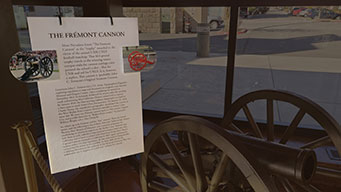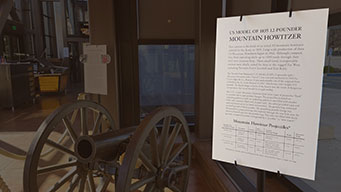The Frémont Cannon
THE FRÉMONT CANNON
Most Nevadans know “The Fremont Cannon” as the “trophy” awarded to the victor of the annual UNR-UNLV football matchup. That 464-pound trophy travels to the winning team’s campus with the cannon carriage color painted the school’s color – blue for UNR and red for UNLV. It is, however, a replica. This cannon is (probably) John C. Frémont’s Original Fremont Cannon.
Lieutenant John C. Frémont led a U.S. Army, Topographical Engineers exploring expedition to map and document an emigrant route between Missouri and Oregon County. Upon completing his mission in November 1843, he famously disobeyed his return orders by traveling south and entering Alta California, Mexico, armed with a cannon! By January 1844, the then starving explorers desperately searched for a Sierra pass to reach Sutter’s Fort (Sacramento). On January 29, 1844, Charles Preuss, the expedition’s cartographer, abandoned the cannon in the West Walker River Canyon. Frémont intended to retrieve it but never did. We trace our Frémont cannon back to 19th century Virginia City and possible discovery in “Walker River country” by journalist William Wright, a.k.a. Dan DeQuille.
So, what’s up with Frémont and his “lost” cannon? There are several stories, and the following is one of them: Frémont’s father-in- law, Senator Thomas Hart Benton of Missouri, was a staunch proponent for establishing an American seaport on the Pacific Coast. Frémont may have been secretly ordered to map potential invasion routes into Alta California and to leave a cannon with Americans living there. Brevet Captain Frémont returned to California in 1845, again, ignoring his written orders. On that expedition, he was authorized to bring another cannon but left before it was available. In June 1846, he led the California Battalion at the outbreak of the Mexican-American War that ended with the “Conquest of California,” without his cannon.

